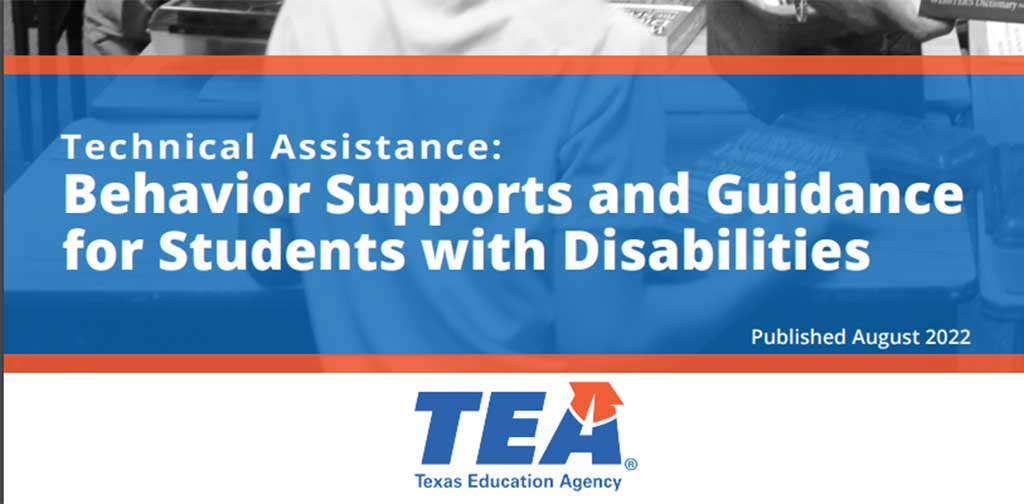Early and accurate identification of learning disabilities and ADHD in schools can set struggling students on a path for success. But identification can be influenced by many factors—and too often is not happening early enough.
Not all children with learning and attention issues are identified in school as having a disability.
Students who are identified by schools as having a disability may qualify for one of two types of assistance. An Individualized Education Program (IEP) provides specially designed instruction, accommodations, modifications and related services such as speech-language therapy to students who qualify for special education. A 504 plan provides accommodations and related services to general education students who are identified with a disability but who do not need special education.
Students with IEPs or 504 plans are protected from discrimination. Schools are also required to report certain data on students who are identified as having disabilities, such as how many repeat a grade, receive out-of-school suspensions or graduate on time.
But many of the 1 in 5 children with learning and attention issues are not formally identified with a disability. When these children receive the right interventions and informal supports, many can succeed in general education. Without enough support, however, children with unidentified disabilities may not reach their full potential and risk falling behind and having to repeat a grade. This could lead to other problems, including dislike of school, absenteeism and dropping out.
Some students who repeat a grade may eventually be identified with a disability after they have fallen far behind. Many others may slip through the cracks and leave school without ever being identified.
Why do some children’s learning and attention issues remain undetected or unsupported in school? Possible contributing factors:
Why Some Struggling Students Are Not Identified
Signs of learning and attention issues get overlooked or misinterpreted. For example, in surveys only 28% of parents and 39% of classroom teachers recognized frequent refusal to go to school as a possible sign of learning and attention issues.2
Some parents refuse to let schools “label” their child. Educators who have recommended that children be evaluated for special education services said parents followed their recommendation only 56% of the time.3
The response to intervention (RTI) process helps many students, but it is sometimes used incorrectly to delay or deny a timely evaluation for students suspected of having a disability. In 2016 the U.S. Department of Education (USED) issued two letters reminding states that intervention strategies cannot be used to delay or deny evaluation of students suspected of having a disability.4
Schools sometimes determine incorrectly that students who are gifted and have learning disabilities are not eligible for special education because they score too high. For example, some students perform well in some content areas and not others, or they may score too high on assessments used to determine eligibility for special education. However, in 2015, USED reminded states that children with learning disabilities cannot be found ineligible for special education solely because they scored above a particular cut score established by state policy.5 Without the right support, even exceptionally bright children will struggle academically. This can lead to low self-esteem, school aversion and lost potential.
Learning and attention issues that remain undetected or unaddressed can lead to lifelong difficulties that include low self-esteem, underemployment and increased risk of involvement with the justice system. For these reasons, it is imperative for researchers to help schools and families understand more about why some students with learning and attention issues are formally identified while others are not.
Fewer students are being identified with specific learning disabilities (SLD)—and it’s unclear why.
The percentage of students in special education who were identified with SLD changed from 43% in the fall of 2008 to 39% in the fall of 2015, a 9.3% decrease. SLD includes students who have dyslexia, dysgraphia and dyscalculia and is still by far the biggest of the 13 disability categories under the Individuals with Disabilities Education Act (IDEA), accounting for more than 1 in 3 students receiving special education.
During the same period in which SLD identification has declined, however, the percentage of students in special education who were identified with other health impairments (OHI)—which covers ADHD—increased from 11% to 15%, a 36% change. OHI now accounts for about 1 in 7 students in special education.
Rates of SLD identification vary widely by state. Since 2008, ten states have experienced increases in SLD identification (CO, CT, GA, IA, KY, LA, NB, NM, NC, and WV) while nine states have experienced declines of more than 20% (DC, ID, KY, MA, MS, MT, RI, TX, and WI).
Understanding what is driving these changes at the state and national level requires further study. This is especially important because there is no evidence to suggest that there has been a corresponding decrease in the prevalence of dyslexia and other kinds of learning disabilities. There are several factors that experts have hypothesized as potential explanations for the decrease in SLD identification:
- Students with SLD and another disability (such as autism) may be classified under that other disability category and still receive services for SLD.
- New state laws and other efforts have increased focus on literacy education in recent years and may be helping struggling readers make progress in general education.
- Increased use of response to intervention (RTI) and 504 plans may help some students with learning and attention issues succeed in the general education curriculum.
- An increased federal investment into the Head Start program6 over the last decade and preschool development programs within the last few years may be offering early opportunities to identify and address challenges before special education services are needed.
It’s hard to tell how many students with ADHD are identified by schools as having a disability.
Much like SLD, signs of ADHD can be evident from a young age. The American Academy of Pediatrics suggests ADHD evaluations should be conducted for children age 4 or older who demonstrate academic or behavioral challenges and show signs of inattention, impulsivity or hyperactivity.
However, unlike learning disabilities or autism, ADHD does not have a discrete disability category under IDEA. Federal guidance has made clear to states that when ADHD is the main reason students qualify for special education, they should be classified under Other Health Impaired (OHI).7 Because studies indicate that ADHD accounts for the vast majority of OHI students,8 this report uses OHI data as a rough proxy for students in special education who have ADHD.
But ADHD often co-occurs with other disorders, and IDEA does not track comorbidities. School teams must choose a primary disability so that each student is only counted once each year. An IEP may provide services and support for more than one type of disability, but this level of detail is not included in federal data. It is also difficult to tell how many students shift from one primary disability to another from year to year.
For these reasons, researchers have looked to parent surveys for insights on how many students in special education have ADHD. More research is needed to get a clearer picture of which students with ADHD are being identified in school and how well schools are meeting the needs of these students.
The early signs of learning and attention issues often go unnoticed.
Learning disabilities don’t suddenly appear in third grade. Researchers have noted that the achievement gap between typical readers and those with dyslexia is evident as early as first grade.9 In 2016, the U.S. Department of Education (USED) issued a memorandum making clear that evaluations should not be delayed or denied even for preschool-age children.10 Yet many students struggle for years before they are identified with SLD.
As the graphic above shows, only 6.6% of students in special education were identified with SLD at age 6. By age 10, the percentage of students in special education who were identified with SLD had increased to 40.8%.
During these years, identification of developmental delays and speech/language impairments decreased. But even if all of those decreases were due to students being reclassified with SLD, those shifts still don’t account for some 40,000 students who were identified with SLD at age 10.
Because many students with SLD struggle with reading, waiting to identify the issue in the upper elementary grades and beyond puts students at significant risk of experiencing academic difficulties in later grades. Students with SLD are likely to enter middle and high school settings without the essential literacy skills needed to meet rigorous academic standards.
The information in this blog post was excerpted from The State of Learning Disabilities: Understanding the 1 in 5 from NCLD. To read the full report, please visit their site at https://www.ncld.org/the-state-of-learning-disabilities-understanding-the-1-in-5



